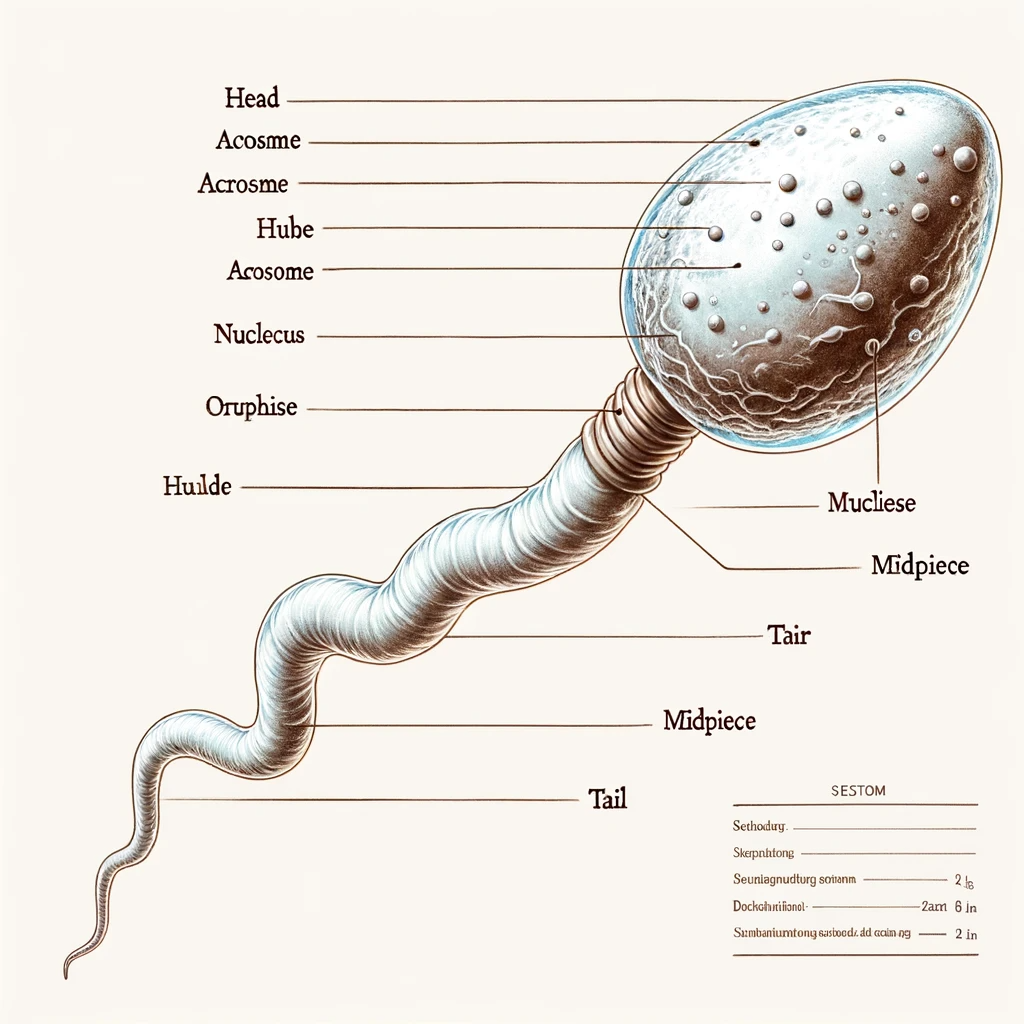11 Most VSAQ’s of Human Reproductive System Chapter in Inter 2nd Year Zoology (TS/AP)
2 Marks
VSAQ-1 : Where are the testes located in man? Name the protective coverings of each testis.
In men, the testes are located in a special pouch outside the abdomen, called the scrotal sacs or scrotum. Each testis is safely wrapped in a protective covering called the tunica albuginea, which is a tough fibrous envelope. The testis also has another protective layer called the tunica vaginalis, which is an outer peritoneal layer. These protective coverings help keep the testes safe and secure, allowing them to function properly in producing sperm and male hormones to maintain reproductive health.
VSAQ-2 : What are the functions of Sertoli cells of the seminiferous tubules and the leydig cells in man?
Sertoli cells are specialized cells found in the seminiferous tubules of the testes. Their primary functions are:
- Support and nourishment: Sertoli cells provide physical and nutritional support to developing sperm cells within the seminiferous tubules.
- Hormone production: They produce inhibin, a hormone that regulates the levels of follicle-stimulating hormone (FSH) in the body, helping to control sperm production.
Leydig cells, located in the interstitial spaces of the testes, have the following functions:
- Hormone production: Leydig cells synthesize and secrete testosterone, a critical male hormone responsible for the development of male secondary sexual characteristics, muscle growth, and the maintenance of reproductive health.
These cells work in coordination to ensure the proper functioning of the male reproductive system.
VSAQ-3 : Name the yellow mass of cells accumulated in the empty follicle after ovulation. Name the hormone secreted by it and what is its function?
The yellow mass of cells accumulated in the empty follicle after ovulation is called the corpus luteum. It secretes the hormone progesterone, which serves the following functions:
- Uterine preparation: Progesterone helps thicken and maintain the uterine lining, preparing it for possible implantation of a fertilized egg.
- Pregnancy support: If fertilization occurs, the corpus luteum continues to produce progesterone to support the early stages of pregnancy until the placenta takes over hormone production.
- Menstrual cycle regulation: In the absence of pregnancy, the corpus luteum gradually breaks down, leading to a decrease in progesterone levels, which triggers the shedding of the uterine lining during menstruation.
VSAQ-4 : Define gestation period. What is the duration of gestation period in the human beings?
- Gestation period is the duration during which an embryo develops inside the mother’s uterus, starting from fertilization and ending with childbirth.
- In human beings, the gestation period typically spans approximately 38 weeks from fertilization or approximately 40 weeks from the start of the last menstrual cycle. This period encompasses the various stages of embryo development, leading to the baby’s readiness for birth.
VSAQ-5 : What is implantation, with reference to embryo?
Implantation is a pivotal process in early human pregnancy, taking place approximately 6 days following fertilization. It involves the attachment of the embryo to the uterine wall, specifically to the endometrial lining. This attachment is vital for the embryo’s nourishment and oxygen supply from the mother’s bloodstream, facilitating its ongoing development. Following successful implantation, the embryo progresses in its growth within the uterus until it reaches maturity for birth.
VSAQ-6 : What is menstrual cycle? Which hormones regulate menstrual cycle?
The menstrual cycle is a female reproductive process. It includes the release of one egg (ovum) and changes in the uterine lining. This cycle is regulated by hormones: FSH, LH, estrogen, and progesterone. The duration is typically 28-29 days but varies among individuals.
VSAQ-7 : Define spermiogenesis and spermiation.
- Spermiogenesis is the transformation of immature spermatids into mature spermatozoa. It involves changes like developing a tail and shedding unnecessary cytoplasm.
- Spermiation is the release of fully developed spermatozoa from the testes. These sperm cells can then be ejaculated during sexual activity for potential fertilization.
VSAQ-8 : What is parturition? Which hormones are involved in inducing parturition?
- Parturition is the process of giving birth to a baby. It involves the baby leaving the mother’s uterus and entering the outside world.
- The hormone involved in inducing parturition is oxytocin, which stimulates uterine contractions during labor to facilitate the baby’s delivery.
VSAQ-9 : What is capacitation of sperms?
Capacitation of sperm is a vital process that occurs in the female reproductive tract, particularly in the uterus and fallopian tubes. It involves specific physiological changes in sperm that are essential for fertilization.
Before capacitation, sperm are not fully capable of fertilizing an egg. During capacitation, sperm undergo alterations in their membrane and chemical composition, rendering them more “activated” and prepared for fertilization.
Once capacitated, sperm become better equipped to navigate the female reproductive tract and successfully reach and penetrate the egg. Capacitation is a crucial step in the process of fertilization, ensuring the sperm’s readiness for fertilization and the initiation of pregnancy.
VSAQ-10 : What is compaction in the Human Development?
Compaction is a critical process occurring in the early stages of human development during embryogenesis. It specifically takes place at the morula stage, characterized by a solid ball of cells resulting from multiple rounds of cell division.
During compaction, the individual cells within the morula, called blastomeres, undergo shape changes and tightly adhere to one another. This tight binding creates a more compact and cohesive structure known as the compact morula.
Compaction serves as a crucial step in embryonic development by facilitating cell-cell communication and establishing cell polarity. These processes are fundamental for subsequent developmental stages, including blastocyst formation and successful implantation in the uterus.
VSAQ-11 : Draw a labelled diagram of a Sperm.

